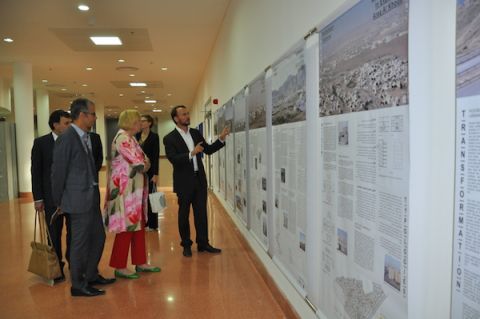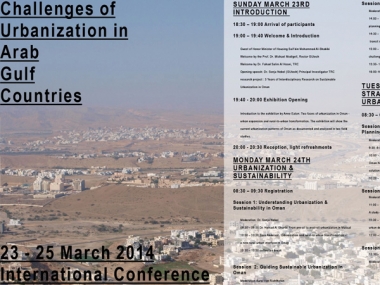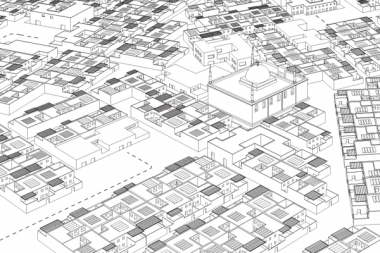- AURELVR
- DESIGN
- RESEARCH
- TEACHING
Urban Oman Exhibition

Urbanisation is characterized through continious growth and expansion of existing urban settlement and at the same time through continious transformation of settlement patterns in the more rural areas. The case studies allow for detailed insights into the current way of how urbanisation is performing – interestingly quite similar in fringe zones of Muscat and in rural areas linked by highways to the Capital area.
The exhibition illustrates on 14 panels the background of urbanisation and its dynamics in Oman, and focuses on characteristic features of settlement patterns that have been developing during the last 40 years. These are in particular the physical lay-out of settlements, access, street patterns, and house types. The two case studies are presented in a way that would also allow to compare them easily. Special light is thrown on rapid changes that are going on during the past 5 years. Current typologies and characteristic patterns of settlements as documented in the case studies have been analysed and evaluated in order to identify the mechanisms behind that foster a particular development. A set of driving forces have been formulated that allow for better understanding of the ongoing processes. These are among others the physical planning standards and building regulations and infrastructure provision, overall planning and development policies, land allocation systems, and but also predominant life-style patterns, car-based mobility, and physical constraints in the Muscat Capital Area. The exhibition ends up with a "manifesto on sustainable development" to specify the comprehensive notion of sustainability and translates it to the Omani context.
The exhibition is meant as one contribution to disseminate research results to a broader public and to stimulate a discourse on crucial issues of future development in the country. The exhibition was previewed to Vice President of the German Parliament Claudia Roth and opened by the Minister of Housing on March 23rd 2014.


